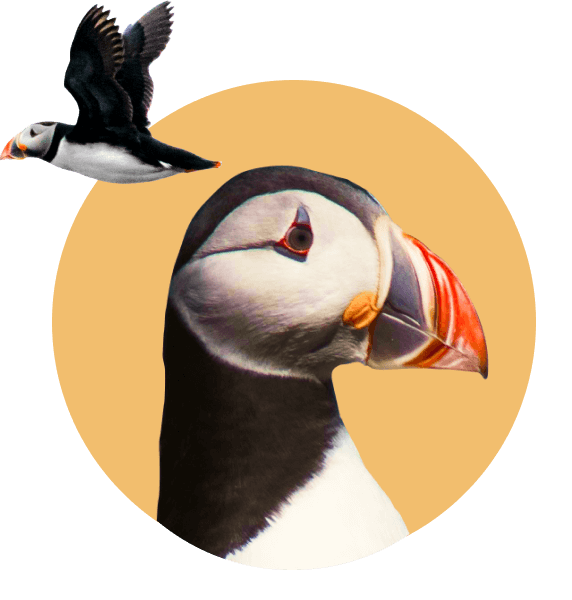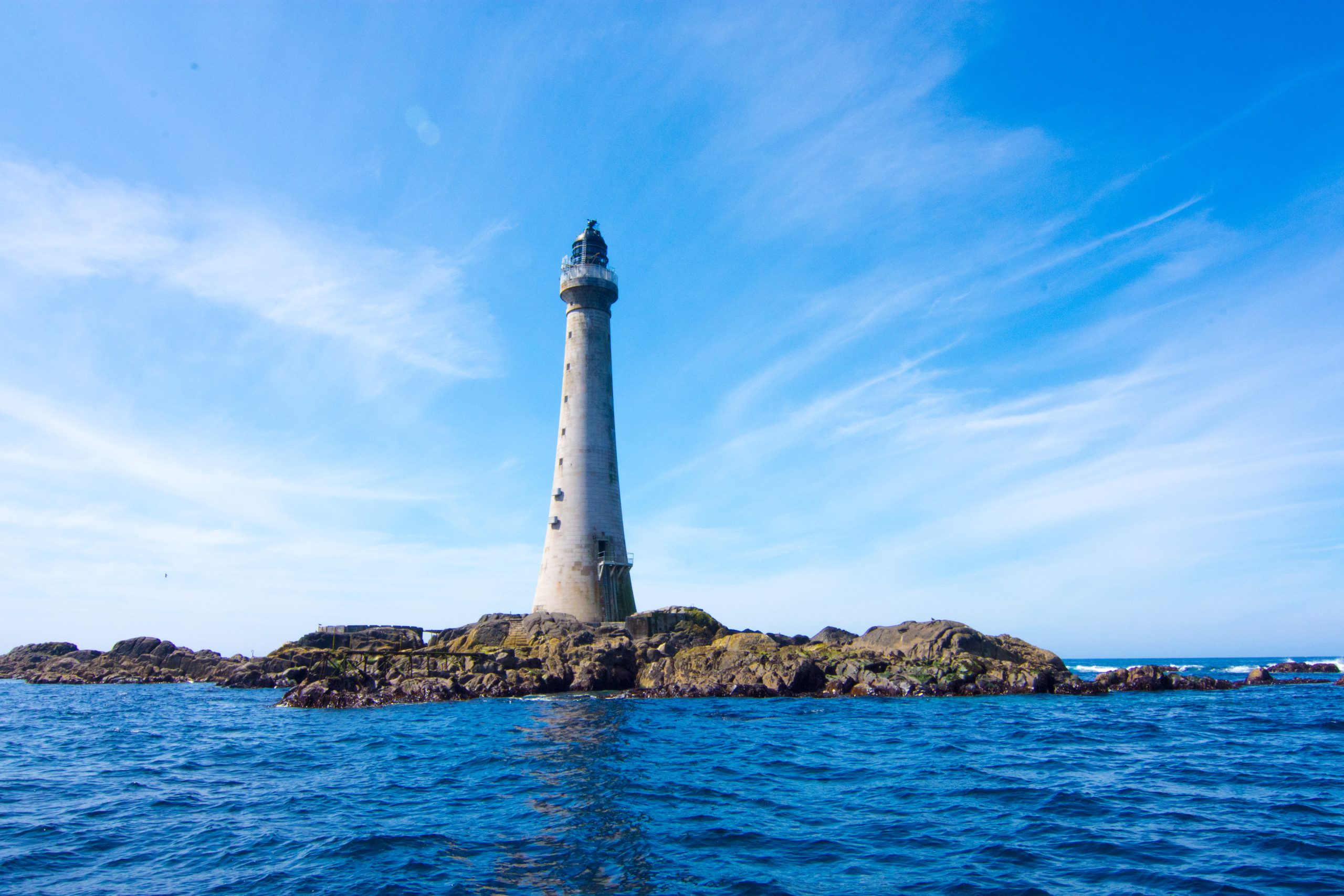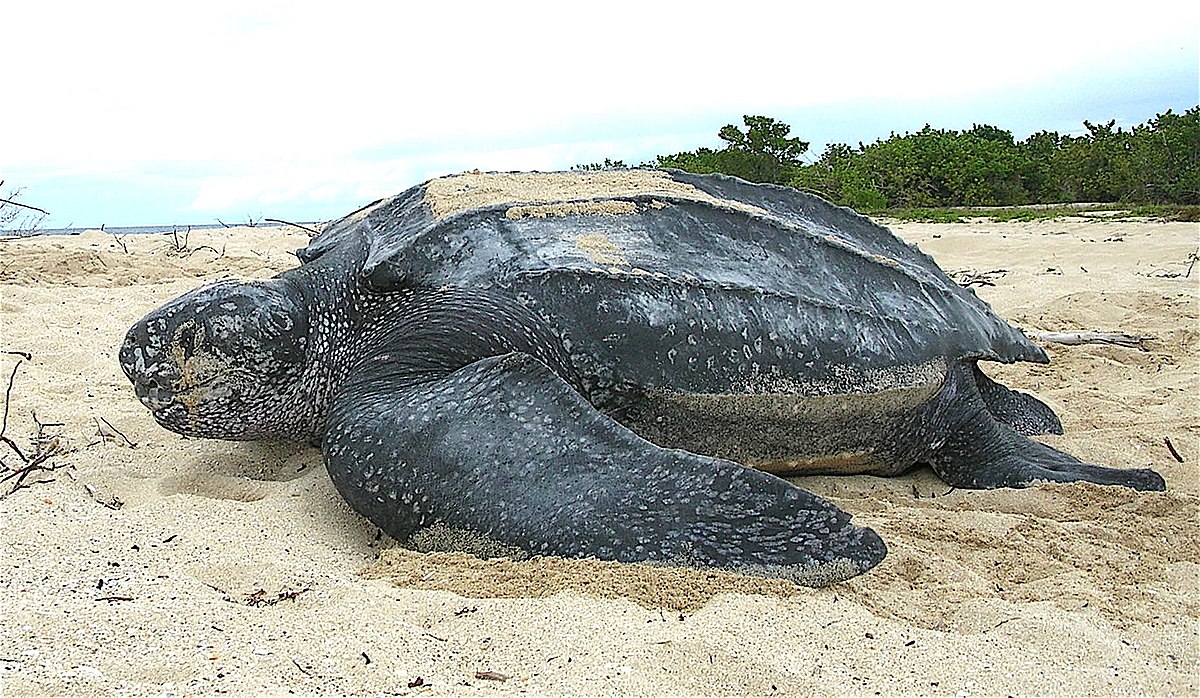
Leatherback Turtle in the Hebrides
Jan 18 2016

Well, July 2015 was a first for us (ever!) as we were treated to a sighting of a rare Leatherback Turtle. Although the event of seeing this amazing animal with your own eyes is special, once you start reading more into their biology the experience takes on a whole new perspective! These are the largest sea turtles in the world, growing to over 2 metres in length and up to around a tonne in weight! An amazing size for something that lives on jellyfish! They can consume over twice their body weight in jellies over a day! Unlike other turtles, they have no shell but a thick hard leathery tissue with longitudinal ridges which their leatherback name derives from. So a very unique animal to start, Shane will tell the tale of what we saw!
On one of our longer expeditions in July 2015, we headed offshore to the remote Skerryvore lighthouse off the coast of the Isle of Tiree. This is a very remote part of the country and visiting there requires good weather and some courage! It’s an area where deep water comes to shallow, causing upwelling nutrients. It is also out in the Atlantic where the slightest wind or swell can create dangerous waves. It’s not well charted and there are numerous submerged rocks that can’t be seen from the surface along with the jagged reef! We headed there in less-than-perfect weather, safe in the knowledge our Redbay boats are the best around for the test of the Atlantic Ocean. We were on the lookout for big fish and pelagics but despite the chop, we made it over to the lighthouse reef for a nosey about. No sharks were found here but on the way back we had stopped for a cup of tea and a flapjack in calm water for a wee break from searching.
There were several seals nearby and we were floating quietly in the tide, telling stories and keeping an eye around us for marine life. One of the passengers alerted us to something of possible interest over to the northeast. The direction was near a known seal haul out, so in the first instance, we suspected it would be a seal. However Luke (our head guide) took a closer look with his binos and immediately shouted ‘LEATHERBACK TURTLE, LEATHERBACK TURTLE, LEATHERBACK TURTLE!’ An excited air immediately sprang up on the boat as everyone scrambled to take a look! ‘Oohs, aahs, wows!’. I trained my skipper’s binos over on the mark, as at that stage I was still a little skeptical. Even though Luke is an amazing naturalist, the rarity of turtles in this area made it extremely unlikely, it was almost like I couldn’t believe it even though I trusted him 100%. The next moment, as my eyes focussed on the shape was the unmistakable long dark nobbled back and the smaller head lifting to breathe, almost speechless I think I made a urgggh noise! The next thought was ‘camera’ which normally would be around my neck but was in the cabin I was standing on top of the engine box as the stern was a higher perspective! At that moment the turtle disappeared, the head lift was likely the last big breath before diving. Taking a break, we were all excitedly talking about it and the conversation turned to their biology and distribution. With myself and Luke being marine biologists we had a basic knowledge of the turtles, but not being a regular species we didn’t have such in-depth knowledge as we do for our local marine life. The question we posed to ourselves was how long a turtle dived for, and when we could likely try and spot it again? We quickly googled it and found that it can be over an hour and they could swim fairly fast! So that made any further sighting fairly unlikely but we did hang around for the best part of an hour, with not so much luck! So an amazing sighting, albeit with no pictures! We’ll get that one day! So what a day and a complete privilege to see one of these iconic turtles! However, after researching more about them, it’s even more amazing that we were able to see one in the Hebrides! Leatherbacks undertake huge migrations between their breeding and feeding grounds, with the graphic below you can see where their Atlantic nesting sites are compared with the Hebrides of Scotland, being mainly west Africa and the Caribbean. The reason for their large migration is food and their prey is jellyfish, something we have a lot of during our summer feeding bonanza! Think about how far they would have to swim between these places and Scotland, it’s almost unbelievable they would swim so far.
Unfortunately, Leatherback turtles are endangered or even critically endangered on the IUCN list. They are vulnerable to fishing gear in the open sea and there are also many problems with nesting sites which have been the attention of many conservation projects. One of the main issues is also to do with their food, when hunting jellyfish, human plastic waste can look very similar and there have been many turtles found with stomachs full of plastic. They have an amazing adaptation for feeding with their throats having layers of backward facing spines called papillae, which means once a jelly has been swallowed it can’t come up again! However the same is true for plastic debris such as shopping bags! Last year in 2014 at the end of a particularly warm summer, there was a spate of leatherbacks deaths with some washed up on the west coast of Scotland and also one on the east coast near Dunbar. We hope our waters will be cleaner in the future for these incredible animals.



